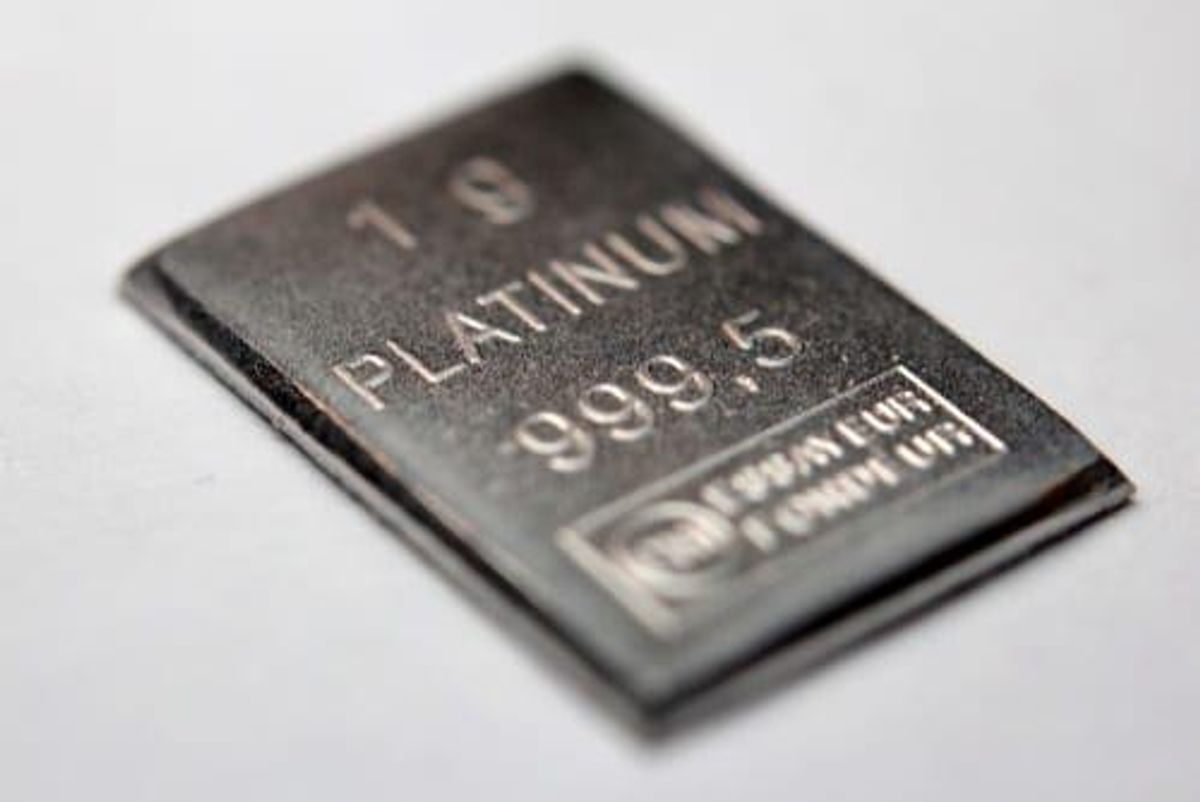WPIC: Platinum Demand Spikes in Q1 on ETF Investment Surge

The WPIC has released its latest platinum report, showing that demand for the precious metal grew 32 percent year-on-year in Q1 2019.
Platinum demand rose by 32 percent year-on-year during the first quarter of 2019 thanks to a substantial increase in exchange-traded fund (ETF) investment, the World Platinum Investment Council (WPIC) states in its latest quarterly platinum report, released on Monday (May 13).
The surge in investment demand offset declines in the automotive, jewelry and industrial sectors, with total investment demand reaching 765,000 ounces. Of those 765,000 ounces, 690,000 ounces were owned by ETF holdings.
“Today’s report shows significant investment demand growth — an indication that platinum demand growth potential is finally outweighing long-standing negative sentiment,” said WPIC CEO Paul Wilson.
“The market may have previously underestimated the significant positive impact on platinum demand likely as more platinum is used in emissions control in gasoline cars and the prospect of more clean new diesels on the road,” he added.
As per the WPIC’s report, the majority of the ETF growth came from South Africa, where investors added 418,000 ounces to their holdings.
The UK had the second largest increase in ETF holdings, as the European country produced 178,000 ounces during Q1. Meanwhile, the US and Switzerland increased their access to platinum investing via ETFs by 79,000 ounces and 18,000 ounces, respectively.
Although ETF holdings dropping towards the end of last year, investors in the western markets and South Africa decided to increase their holdings at the beginning of this year, supported by a combination of factors that occurred in Q1, mostly a rising platinum price, short-term supply risk and the possibility of more diesel cars on the road.
“The marked turnaround by investors that has been anticipated for several years yet failed to materialize will be high on the agenda for most attendees. We believe this turnaround follows the combination of several demand growth signals, downside supply risk and rising price,” Wilson noted.
Also aiding platinum in the first quarter was that the Royal Mint and the South African Mint were producing platinum coins, which provide a solid underpin for bar and coin demand.
On the flipside, jewelry demand fell by 7 percent from Q1 of last year, mostly due to a decline in Chinese demand. The WPIC explains that, despite the decline, jewelry demand rose in all other regions.
Industrial demand was also down in the first quarter of this year, but the decline was marginal, coming in at a dip of 1 percent year-on-year, but flat quarter-on-quarter. The WPIC reveals that the increase in platinum requirements for chemical catalysis in China was outweighed by lower demand for glass fabrication and other end users. However, the WPIC believes that, because of the fact that industrial demand generally mirrors global economic growth, it should rise in the long term.
For its part, automotive demand was down 5 percent year-on-year, but only slipped 2 percent quarter-on-quarter. The WPIC says that ongoing developments in the palladium market will more than likely result in palladium being substituted for platinum in case-by-case scenarios.
“It is worth noting that this (increase in palladium demand and price) allows increased strategic investment in demand creation and stimulation by the industry, most specifically in jewelry, investment and industrial applications, including fuel cells. We are confident that this will improve further prospects for sustained future platinum demand growth,” Wilson noted.
Finally, total platinum supply reached 2 million ounces in the first quarter, increasing 15 percent year-on-year. Total mining supply was up 19 percent from this time last year, coming in at 1.53 million ounces, with South African output recovering from smelter problems in the first quarter of last year.
Recycling made gains of 4 percent during Q1, rising to 480,000 ounces, as an uptick in scrap steel prices, as well as massive increases in the prices of palladium and rhodium, resulted in recyclers pushing to recover more autocatalysts. Even with the push in place, the renewed interest only added up to an additional 75,000 ounces year-on-year.
According to the WPIC, 2019 will still be a year that ends in surplus, although the organization’s initial forecast has been revised from a surplus of 680,000 ounces to 375,000 ounces, thanks to the impressive increase in investment demand.
Annual demand is expected to rise 8 percent year-on-year, while supply is forecast to climb 4 percent.
As of 12:37 p.m. EDT on Monday, platinum was down 1.04 percent, trading at US$845 per ounce.
Don’t forget to follow us @INN_Resource for real-time news updates!
Securities Disclosure: I, Nicole Rashotte, hold no direct investment interest in any company mentioned in this article.